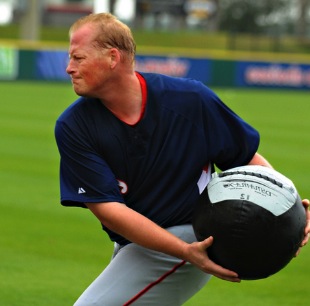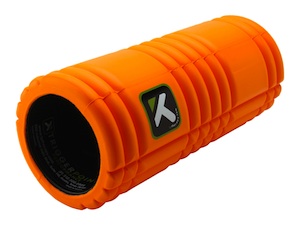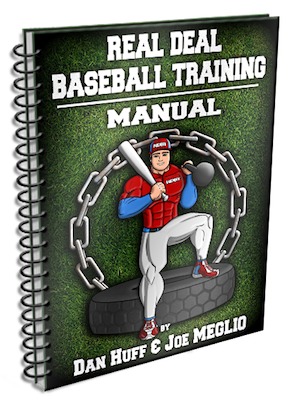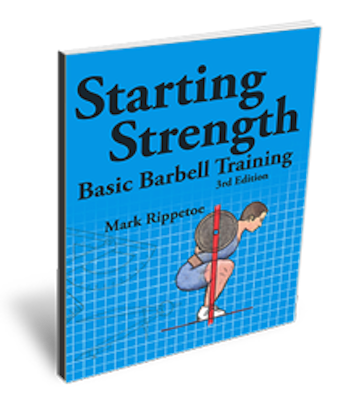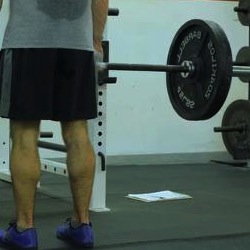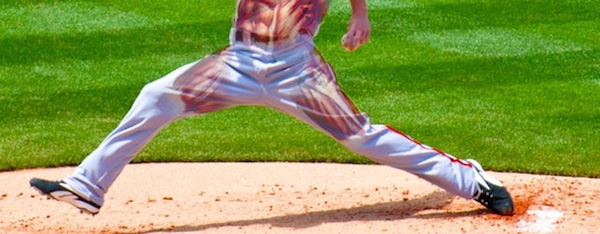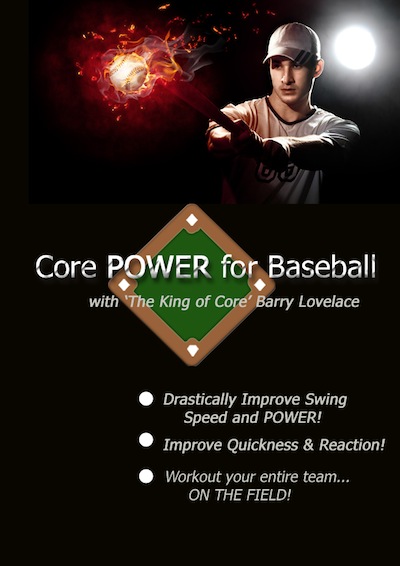In a previous post, we laid out an extensive sample 3-day baseball off-season program. The popularity of the sample Phase 1 program prompted emails asking Baseball Training Methods, “What’s next?” Hence, the writing of this sample Phase 2 off-season program.
First and foremost, let’s remember that the off-season is the time of year baseball players need to concentrate on their strength and conditioning, especially in the early phases. Leave the ball and glove in your bag and give your throwing shoulder some time off from throwing.
Before we get to the workout, let’s take a look at the overall year again and discuss our goals for Phase 2. As seen below, the training year can be broken down into off-season, pre-season, and in-season segments. Within each season, you can break down the different months into 4 week phases.


Overall goals to keep in mind for the four phase baseball off-season are to recover from the previous season, rehabilitate existing/nagging injuries, and develop a strength and conditioning foundation for the following training year.
For Phase 2 specifically, our goals will be, but are not limited to:
- Continue rehabilitation of any lingering injuries.
- Evaluate Phase 1 and make necessary changes to general strength program.
- Progress strength exercises where appropriate.
- Stay consistent with soft tissue and flexibility work.
- Continue to hold off on any throwing.
Phase 2 begins where Phase 1 finishes. Depending on your training experience and level of fatigue at the end of Phase 1, you may want to consider a deload or recovery week prior to beginning Phase 2. Younger athletes with less training experience will not need that deload week as much as a ballplayer who has been training for 3-5 years. For the most part though, you need to take your own personal assessment of how you feel and make the call from there.
Off-Season Baseball Strength Program – Phase 2 Overview
Each training day will include the following segments, and each segment will be done in the order listed:
- Foam Roll/Soft Tissue Work
- Pre-hab
- Dynamic Warm-up
- Strength Work
- Conditioning
- Post-Training Session Static Stretching
- Foam Roll
For the purposes of this article and to make a smooth transition from the sample Phase 1 program, a 3-day per week program will be considered. Just remember, depending on the individual athlete and how the program is structured, a baseball off-season strength program can be anywhere from 2-5 days. Also, we have already discussed soft tissue work, pre-hab, and dynamic warm-up protocols in the sample Phase 1 post. So, if you would like to learn more about those aspects of the program, please review them here.
Sample Off-Season Baseball Strength Program – Phase 2
For Phase 2, be sure to train on non-consecutive days. You’ll want to give your body 36-48 hours to recover between training sessions. While the examples below will include conditioning on the same days as lifting, you could perform your baseball conditioning on non-lifting days. For example, if you strength train on Mon/Wed/Fri, you can perform you conditioning after your lifting session on those same days or on Tues/Thurs/Sat. If you decide to complete your lifting and conditioning on opposite days, be sure to have at least one day per week that is devoted completely to recovery. In this example, that would be Sunday. That means no strenuous activity. Either take the entire day off or focus just on soft tissue work and static stretching.
**We understand that you may not be familiar with many of the exercises listed below. A quick search will direct you to videos and explanations that can help you better understand the movements. However, just watching a video will not take the place of a qualified strength and conditioning coach who can demonstrate technique and properly correct form if there are any issues. When in doubt, do not perform the movement. Seek guidance and instruction. If any exercise causes pain, use common sense and do not do it.**
Day 1
Foam Roll
- Glutes – 1 x 60 seconds each side
- IT Band – 1 x 60 seconds each side
- Quads – 1 x 60 seconds each side
- Groin – 1 x 60 seconds each side
- Hip Flexor/TFL – 1 x 60 seconds each side
- Mid/Upper Back – 1 x 60 seconds each side
When foam rolling or completing soft tissue work, be sure to listen to your body. It will tell you if certain areas need more or less focus. You can always spend longer on one area if need be.
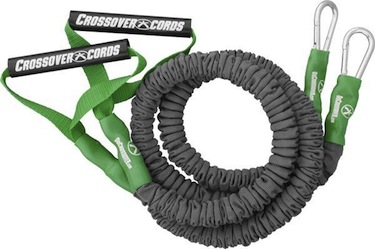 Pre-hab
Pre-hab
Perform the following movements in a circuit by completing one set of each exercise and then return to the start and complete any movements with additional sets.
- Glute Bridge – 2 x 10
- Squat with mini-band – 2 x 10
- Quadruped Rotations – 2 x 8 each side
- I’s, Y’s, T’s, External Rotation with band – 2 x 10 each (or Crossover Symmetry program)
- Plank – 1 x 60 seconds
Dynamic Warm-up
The following should take 10-12 minutes to complete. Set up two cones 10-15 yards. Start on one cone and move in the direction of the second. When you complete the required distance for a movement, jog back to the starting cone. Complete each movement deliberately. Do not just go through the motions.
- Reverse Lunge with Twist – 1 x 10 yards
- Inverted Hamstring Stretch – 1 x 10 yards
- World’s Greatest Stretch – 1 x 10 yards
- Inch Worms – 1 x 10 yards
- Straight Leg March – 1 x 10 yards
- High Knees – 1 x 10 yards
- Butt Kicks – 1 x 10 yards
- Lateral Shuffle – 1 x 10 yards each direction
Strength
Exercises listed below are paired in supersets. Training in supersets means that you will perform one set of the first listed exercise and then one set of the second listed exercise. Take 45-60 seconds of rest and then repeat for the second set of each. Continue this method until all sets in a given superset are completed. Then, move to the next two exercises that are paired together as a superset.
- Box Jump – 1-leg Landing – 4 x 3 each
- Medicine Ball Rotational Chest Pass – 4 x 5 each side
- Trap Bar Deadlift – 3 x 5
- Alternating DB Bench Press – 3 x 6 each
- DB Reverse Lunge Off Box – 3 x 6 each
- Inverted Row – Underhand Grip – 3 x 10
- Glute/Ham Raise – 2 x 8
- Forearm Wall Slide – 2 x 10
- Cable Pallof Press – 2 x 10 each side
- Reverse Hyper – 2 x 10
Conditioning
Shuttle Runs – Shuttle runs allow you to work on agility and change of direction. Set up two cones 10 yards apart. Begin at the start cone and sprint full speed to the second cone. Decelerate and change direction, then sprint back to the start. Performing the total assigned distance between the cones completes one rep. Rest 2-4 minutes and then complete the next set.
- 2 x 30 yards
- 2 x 40 yards
- 2 x 60 yards
- 4 x 20 yards
Static Stretching
- Hamstrings – 1 x 60 seconds each
- Groin – 1 x 60 seconds each
- Piriformis Stretch – 1 x 60 seconds each
- Hip Flexor Stretch – 1 x 60 seconds each
- Calves – 1 x 60 seconds each
Foam Roll
- Glutes – 1 x 60 seconds each side
- IT Band – 1 x 60 seconds each side
- Quads – 1 x 60 seconds each side
- Groin – 1 x 60 seconds each side
- Hip Flexor/TFL – 1 x 60 seconds each side
- Mid/Upper Back – 1 x 60 seconds each side
Day 2
Foam Roll
- Glutes – 1 x 60 seconds each side
- IT Band – 1 x 60 seconds each side
- Quads – 1 x 60 seconds each side
- Groin – 1 x 60 seconds each side
- Hip Flexor/TFL – 1 x 60 seconds each side
- Mid/Upper Back – 1 x 60 seconds each side
Pre-hab
Perform the following movements in a circuit by completing one set of each exercise and then return to the start and complete any movements with additional sets.
- 1-leg Glute Bridge – 2 x 10 each side
- Quadruped Opposites- 2 x 12 each side
- 90/90 Stretch – 2 x 6 each side
- Rhythmic Stabilizations – 2 x 10 seconds each arm
- Side Plank – 1 x 45 seconds each side
Dynamic Warm-up
The following should take 10-12 minutes to complete. Set up two cones 10-15 yards. Start on one cone and move in the direction of the second. When you complete the required distance for a movement, jog back to the starting cone. Complete each movement deliberately. Do not just go through the motions.
- Walking Lunge with Knee Hug – 1 x 10 yards
- Walking Quad Stretch – 1 x 10 yards
- World’s Greatest Stretch – 1 x 10 yards
- Inch Worms – 1 x 10 yards
- Lateral Lunge – 1 x 10 yards each direction
- High Knees – 1 x 10 yards
- Butt Kicks – 1 x 10 yards
- A Skip – 1 x 10 yards
- Lateral Shuffle – 1 x 10 yards each direction
Strength
As with Day 1, exercises below are listed as supersets. In one instance, you will see a tri-set. Tri-sets are performed similar to supersets, but instead of two exercises back-to-back, you now have three.
- Lateral Bound – Continuous – 4 x 6
- Rotational Medicine Ball Slam – 4 x 6
- Prone Stability Ball T’s – 3 x 8
- Box Squat – 3 x 5
- Stability Ball Push-up Plus – 3 x 8
- Half-Kneeling Hip Flexor Stretch – 2 x 60 seconds each side
- DB RDL – 3 x 6
- 1-Arm Cable Row – 3 x 10 each side
- DB Goblet Lateral Lunge – 3 x 8 each side
- TRX Low Row – 2 x 10
- Stability Ball ‘Stir the Pot’ – 2 x 10 each direction
- Plate Holds – 2 x Max time
Conditioning
Build-up Sprints – Build-up sprints start with the baseball player already in motion. In the example below, you will run a total of 40 yards, but only the second 20 yards at 100% effort. Set up cones, use a track, or perform in the outfield. Set up cones at 20 and 40 yards. When you perform the Build-Up sprints, begin your run at 50-75% effort. As you hit the halfway mark, increase your speed to 100% effort.
- 2 20-yard sprints at 50% effort
- 8 40-yard Build-Up sprints: first 20 yards at 75% effort, second 20 yards at 100% effort
After each sprint, use your walk back to the starting line as your rest.
Static Stretching
- Hamstrings – 1 x 60 seconds each
- Groin – 1 x 60 seconds each
- Piriformis Stretch – 1 x 60 seconds each
- Hip Flexor Stretch – 1 x 60 seconds each
- Calves – 1 x 60 seconds each
Foam Roll
- Glutes – 1 x 60 seconds each side
- IT Band – 1 x 60 seconds each side
- Quads – 1 x 60 seconds each side
- Groin – 1 x 60 seconds each side
- Hip Flexor/TFL – 1 x 60 seconds each side
- Mid/Upper Back – 1 x 60 seconds each side
Day 3
Foam Roll
- Glutes – 1 x 60 seconds each side
- IT Band – 1 x 60 seconds each side
- Quads – 1 x 60 seconds each side
- Groin – 1 x 60 seconds each side
- Hip Flexor/TFL – 1 x 60 seconds each side
- Mid/Upper Back – 1 x 60 seconds each side
Pre-hab
Perform the following movements in a circuit by completing one set of each exercise and then return to the start and complete any movements with additional sets.
- Glute Bridge Hold – 2 x 30 second
- Kneeling Dynamic Adductor Stretch – 2 x 6 each side
- Lateral Squat – 1 x 10 each
- Seated 2-arm Band External Rotation (No money drill) – 2 x 12
- TRX Standing Rotations – 1 x 6 each side
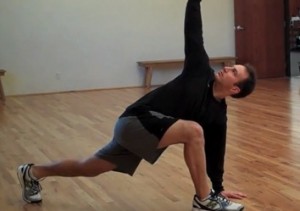 Dynamic Warm-up
Dynamic Warm-up
The following should take 10-12 minutes to complete. Set up two cones 10-15 yards. Start on one cone and move in the direction of the second. When you complete the required distance for a movement, jog back to the starting cone. Complete each movement deliberately. Do not just go through the motions.
- Reverse Lunge with Twist- 1 x 10 yards
- Quad Stretch with Toe Touch – 1 x 10 yards
- World’s Greatest Stretch – 1 x 10 yards
- Inch Worms – 1 x 10 yards
- Straight Leg March – 1 x 10 yards
- High Knees – 1 x 10 yards
- Butt Kicks – 1 x 10 yards
- A Skip – 1 x 10 yards
- Lateral Shuffle – 1 x 10 yards each direction
Strength
Again, supersets and tri-sets are utilized similar to Day 2. The final two exercises/movements are listed by by themselves and not together. For the second to last movment, perform the first set, rest for 30-60 seconds, then repeat for the second set. Then, move to the final exercise and perform in the same manner.
- Broad Jump – 1-leg Landing – 4 x 3 each
- Medicine Ball Overhead Throw with Step – 4 x 3 each leg
- Stability Ball Rhythmic Stabilization on Wall – 2 x 10 seconds each side
- BB Glute Bridge – 3 x 8
- Chin-up – 1 x 12, 1 x 10, 1 x 8
- 1-leg DB RDL – 3 x 6 each side
- TRX 1-Arm Rotational Row – 3 x 8 each
- Side Plank Touches – 2 x 15 each side
- Ab Wheel – 2 x 10
Conditioning
- Heavy Sled Drags – 6 x 30 yards; rest to full recovery between sets (at least 1-2 minutes, longer if needed)
Static Stretching
- Hamstrings – 1 x 60 seconds each
- Groin – 1 x 60 seconds each
- Piriformis Stretch – 1 x 60 seconds each
- Hip Flexor Stretch – 1 x 60 seconds each
- Calves – 1 x 60 seconds each
Foam Roll
- Glutes – 1 x 60 seconds each side
- IT Band – 1 x 60 seconds each side
- Quads – 1 x 60 seconds each side
- Groin – 1 x 60 seconds each side
- Hip Flexor/TFL – 1 x 60 seconds each side
- Mid/Upper Back – 1 x 60 seconds each side
Week by Week Progressions
Remember, Phase 2 is one month in duration – 4 weeks. Each week you should be making small adjustments to each exercise so as to change the sets, reps, or weight. Here are some quick guidelines to help you make those progressions.
- Power-based exercises such as jumps, bounds, and medicine ball throws should be adjusted minimally. Add one rep in Week 2, another in Week 3. For Week 4, return to the same rep scheme as Week 1.
- The deadlift and box squat can be kept at 3 sets of 5 reps each week. Add 5 pounds each week to each lift.
- For exercises involving dumbbells (DB) or cables, increase 6 reps to 8, and 8 reps to 10. Keep the weight the same when making these rep increases. After completing a week at 10 reps, return to 6 reps for the exercise, but increase the weight.
- For bodyweight exercises such as those that use the TRX or no equipment at all, follow a similar method using 8, 10, and 12 as your rep increments.
Final Words
The sample Phase 2 program outlined above should give you a solid continuation from Phase 1 of your off-season baseball strength program. Phase 2 will allow you to progress to more advanced movements from Phase 1, continue to work on the basics by ironing out some inefficiencies in your movement patterns, and strengthen your foundation of strength, mobility, and stability even more.
If you have any questions, feel free to contact us using the contact page on the menu above.
Good luck!

